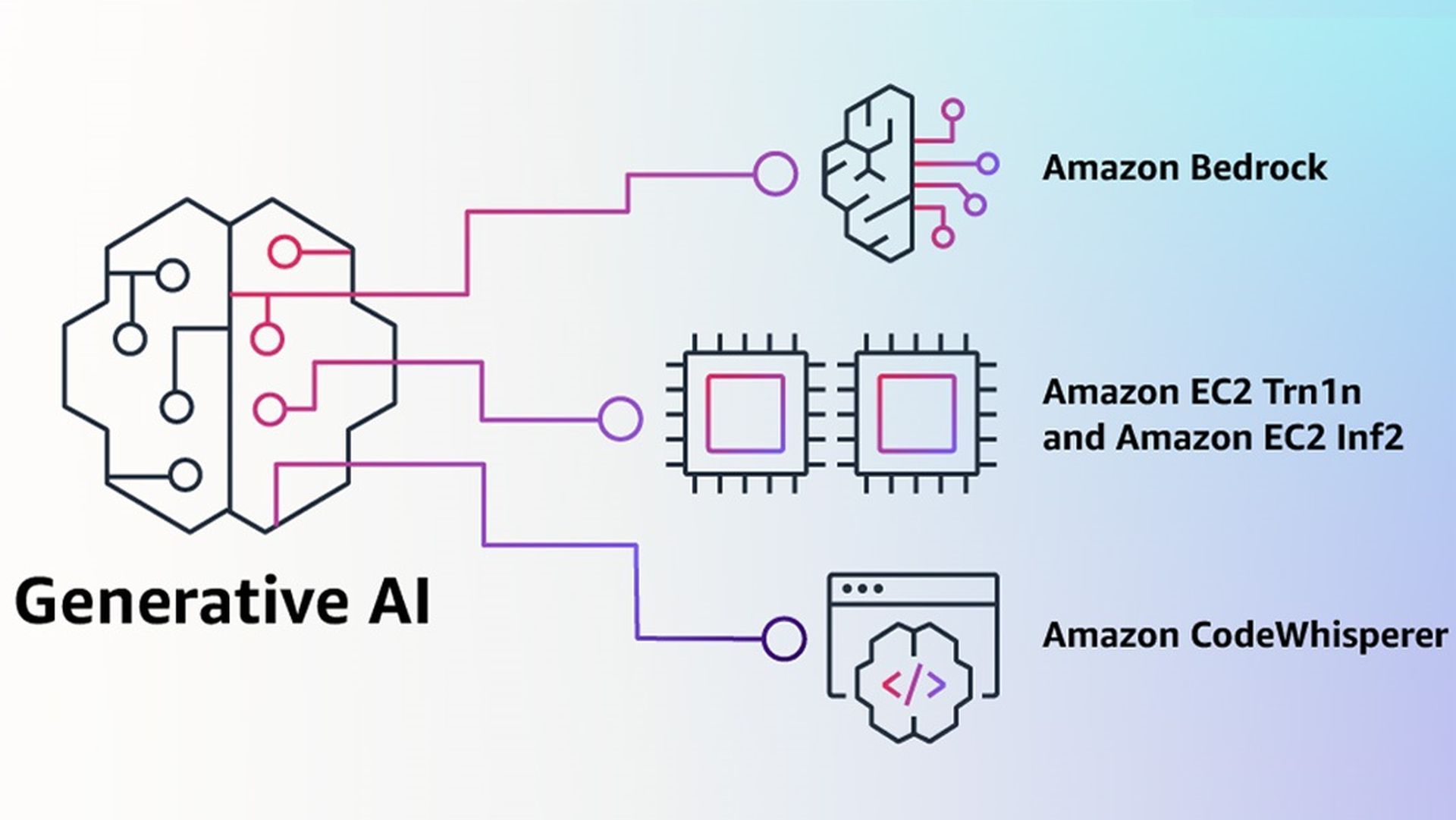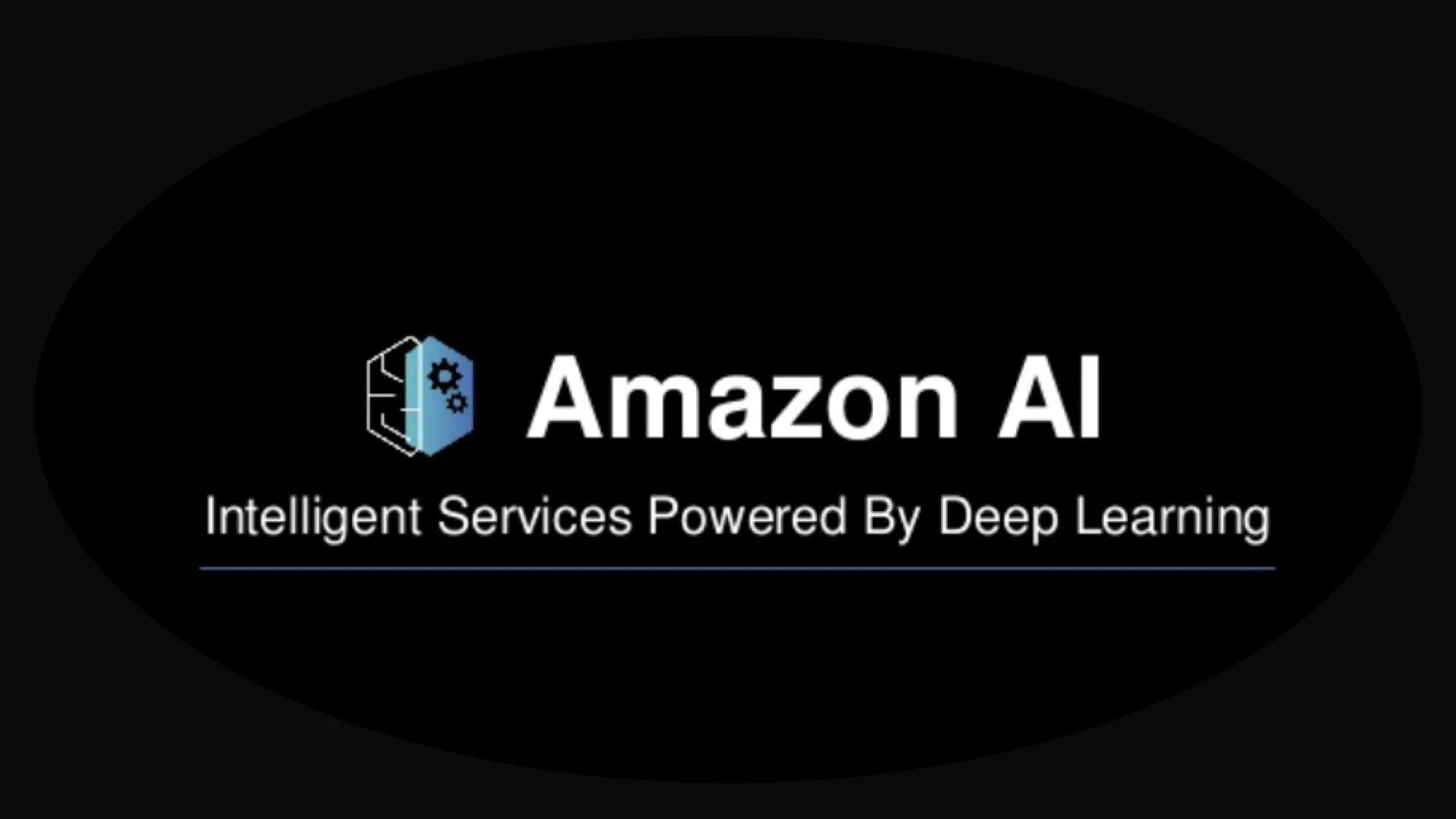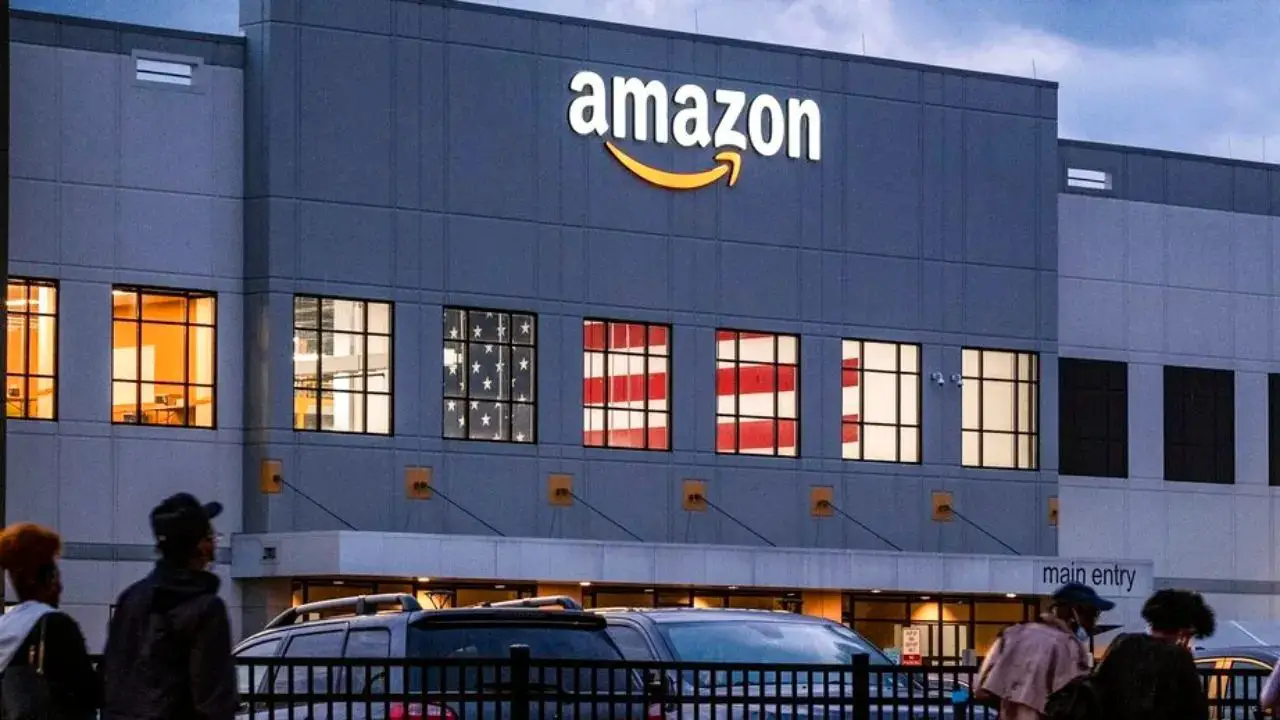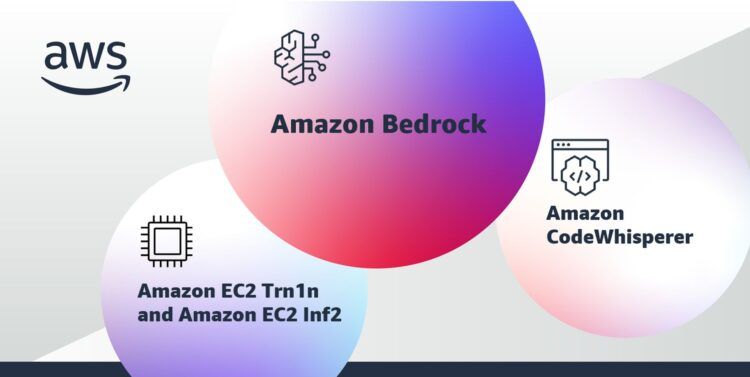Amazon is joining the generative AI fray with ‘Amazon Bedrock AI’. AWS (Amazon Web Services) announced Amazon Bedrock, a platform for building generative AI-powered apps using pre-trained models from firms like AI21 Labs, Anthropic, and Stability AI. Bedrock, which is now in “limited preview,” also provides access to Titan FMs (foundation models), a collection of models trained in-house by AWS.
Bedrock’s launch was largely foreshadowed by AWS’ recent agreements with generative AI firms, as well as its rising investments in the technology necessary to develop generative AI apps.
ChatGPT and other generative artificial intelligence models have taken the technological world by storm and threaten to enter the mainstream. With the unveiling of Bedrock, it’s evident that Amazon, like Big Tech competitors Microsoft and Google, is ready to go all-in.
Bedrock will enable Amazon Web Services (AWS) customers to create generative AI from foundation models (FMs). GPT-4 is one such model, and ChatGPT is a generative AI application developed on top of it.
Build & scale your #GenerativeAI apps with Amazon Bedrock. 🚀☁️
Learn how access to leading foundation models makes it easy to build apps quickly while keeping your data private & safe.
👉 https://t.co/mjYtDgC6No #AWS #machinelearning pic.twitter.com/9xYGfTJILs
— Amazon Web Services (@awscloud) April 13, 2023
How Amazon Bedrock AI works?
Amazon Bedrock AI gives you the freedom to pick from a wide choice of FMs produced by leading AI companies and Amazon, allowing you to find the model that is most suited for the job at hand.
With Bedrock’s serverless experience, you can quickly get started, privately customize FMs with your data, and easily integrate and deploy them into your applications using familiar AWS tools and capabilities (including integrations with Amazon SageMaker ML features like Experiments to test different models and Pipelines to manage your FMs at scale) without having to manage any infrastructure.

Amazon Bedrock AI custom models
Bedrock is Amazon’s most aggressive foray into the generative AI sector, which Grand View Research believes may be worth over $110 billion by 2030.
AWS clients may use Bedrock to access AI models from a range of suppliers, including AWS, via an API. The details are hazy — for example, Amazon hasn’t released a formal price. However, the business stressed that Bedrock is intended for big clients creating “enterprise-scale” AI programs, distinguishing it from other AI model hosting platforms such as Replicate (as well as incumbent rivals Google Cloud and Azure).
One might assume that generative AI model suppliers were enticed to join Bedrock by AWS’s reach or prospective revenue sharing. However, Amazon did not publish the details of the model license or hosting agreements.

AI21 Labs’ Jurassic-2 family, which is multilingual and can create text in Spanish, French, German, Portuguese, Italian, and Dutch, is among the third-party models provided on Bedrock. Anthropic’s model on Bedrock, Claude, is capable of a variety of conversational and text-processing tasks. Meanwhile, Stability AI’s Bedrock-hosted text-to-image models, like Stable Diffusion, can produce pictures, art, logos, and graphic designs.
In terms of Amazon’s customized services, the Titan FM family now consists of two models, with more probably on the way in the future: a text-generating model and an embedding model.
The text-generating model, which is similar to OpenAI’s GPT-4 (although not necessarily on the same level in terms of performance), can handle tasks like creating blog posts and emails, summarizing papers, and extracting information from databases.
The embedding model converts text inputs such as words and phrases into numerical representations known as embeddings that include the text’s semantic meaning. Philomin believes it’s comparable to one of the models that fuel Amazon.com searches.

This is not Amazon’s first AI push
According to Amazon, the customized choices come from the Titan FM family, which currently has two models and more on the way. There is a text-generation model as well as an embedding model. The former functions similarly to ChatGPT-4, doing comparable tasks, but the latter converts text inputs such as words and phrases into numerical representations with semantic meanings.
Customers who use Bedrock through AWS can customize any model by connecting the service to a few labeled samples in the Amazon S3 cloud storage plan. Amazon has said repeatedly that there would be no set of specific customer data for undertaking generative-AI training of the underlying models.
With the launch of its Bedrock service and the introduction of two new in-house big LLMs, Amazon hopes to transform the generative AI competition between Google’s Bard and Microsoft/OpenAI’s ChatGPT into a combat royale.
You can check our other articles, such as the biggest tech layoffs 2022 explained: Amazon, Meta, Twitter, Asana and The shocking FTX scandal is becoming an Amazon TV series.





